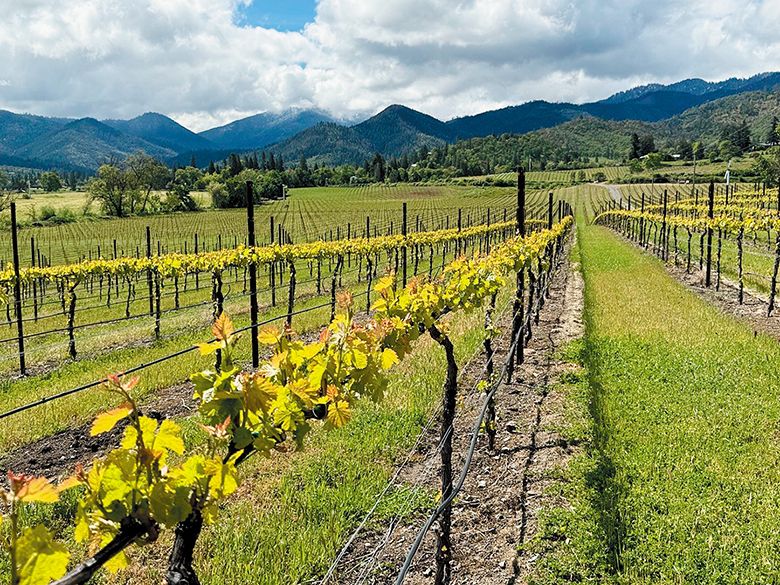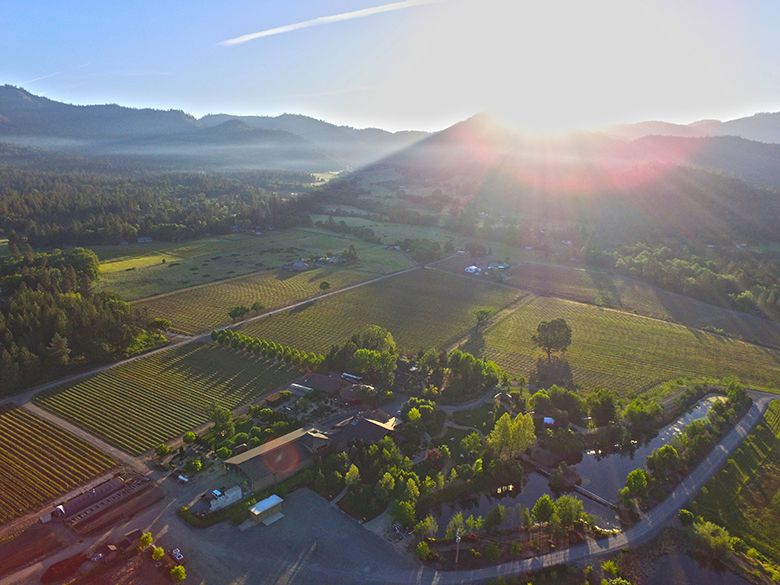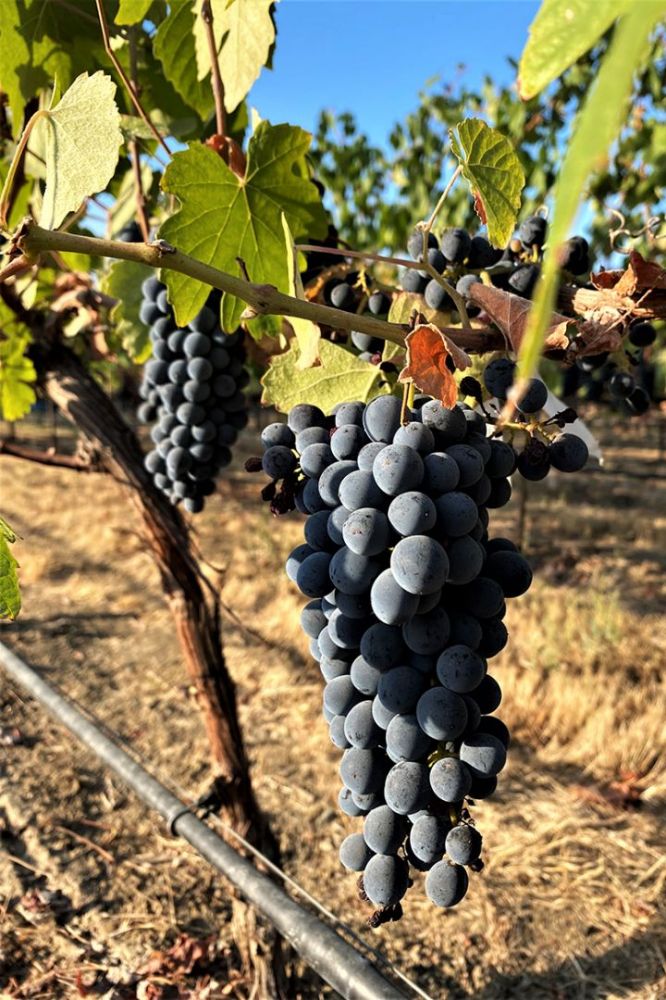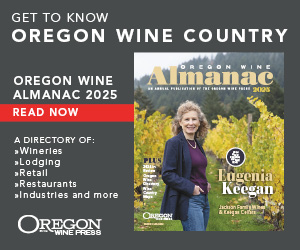Old World, New Roots: Part One
The Rogue Valley is home to a wide range of grape varieties



By Paula Bandy
The Rogue Valley is a land of sunlit hillsides, crisp mountain air, ancient volcanic soils, breathtaking vistas and river-cut trails. Vineyards weave through the landscape, flourishing in the dramatic temperature swings that shape the Valley’s expressive range of grapes.
In the early days, wine’s future was uncertain. Few knew what might survive, let alone thrive. Decades later, the answer is not just a handful, but many. Today, 70 unique grape varieties are cultivated here, with additional plantings planned.
It’s Oregon’s highest wine-growing region, with elevations climbing nearly 2,000 feet. As our state’s warmest and driest appellation, the Rogue Valley is punctuated by cooler microclimates and exceptional ecological diversity found nowhere else. Beneath its vines sit 300 million years of geological history– an intricate tapestry of landscapes and terroir uniquely suited to viniculture.
Here, you’ll find a story of place, season and the spirit of exploration.
In the Heat
Dr. Alexander Levin, Southern Oregon Research and Extension Center’s director and viticulturist, sums it up, “It’s just warm here. Warmer temperatures allow us to grow a wider variety of grapes.”
He continues, “You can grow Grüner Veltliner– which prefers a cool, dry climate– alongside Mourvèdre, a variety that does well where it’s hot and dry. You merely pick one earlier, and the other later, because we have the seasons for it. Certain sites are better suited to one variety than another, but the fact is this climate allows almost anything to grow.”
Schmidt Family Vineyards has 20 grape varieties on 45 acres in the Applegate Valley. Winemaker René Brons notes, “While our elevation change is slight, I’m surprised by how much the temperatures can vary. We initially specialized in Bordeaux varieties, but now we run the gamut.” Planted varieties include grapes with origins in France, Spain, Portugal, as well as both the cool-loving Austrian Grüner Veltliner and Spanish Mourvèdre.
Geological Complexity
Volcanic activity, marine sediment and shifting tectonic plates created layers of ancient seabed, metamorphic rock, as well as granite, basalt and sandstone volcanic soils. Alluvial and sandy loam areas encourage deep root systems and concentrated fruit, while volcanic soils contribute vibrant acidity and minerality.
The Rogue Valley is composed of four interconnected yet distinct valleys. Elevations stretch from 1,000 to 2,000 feet. Warm days and cool nights create diurnal temperature swings up to 50°F, preserving acidity while allowing grapes to fully ripen.
• Bear Creek Valley: A densely planted region with warmer, drier conditions ideal for growing both crisp and savory whites, along with bolder red wines.
• Applegate Valley: It is slightly cooler with more structured reds and aromatic whites.
• Illinois Valley: Nearest to the coast, higher rainfall and cooler temperatures make it perfect for Pinot Noir and Alsatian whites.
• Upper Rogue Valley: Rising toward the Cascade foothills, cooler nights, higher elevations, shorter growing seasons and later harvests create ideal conditions for aromatic whites, Pinot Noir and high-acid varietals. Framed by forests, its volcanic influence and rugged terrain offer a contrast to the warmer southern valleys.
Red Lily Vineyard, located along the Applegate River, is an example of the region’s ecological diversity. Generally trending cooler, this site has a warm-summer Mediterranean climate, ideal for cultivating heat-loving grapes. Owner and winemaker Rachael Martin, inspired by her travels, specializes in Spanish and Portuguese varieties. In 2010, after tasting a memorable wine during a visit to Spain, she planted Verdejo, “a white with more complexity and body than Albariño.”
A Distinctive Edge
The Rogue Valley American Viticultural Area offers a rare advantage for winemaking. A viticultural playground, growers can produce everything from bold Rhône reds to crisp whites, all with a distinct sense of place. Here, geology isn’t just the backdrop– you can taste it in the bottle.
Quail Run Vineyards, planted with 39 distinct grape varieties, spans 13 sites between Talent and Jacksonville. A diverse topography of shifting elevations, varied soils and microclimates creates ideal conditions for a wide range of grapes. “Wine is the only drink with hundreds of different flavors, qualities and characteristics.
It’s not just about one vintage– it’s the thrill of something exciting and unpredictable. That’s what I absolutely adore about it,” marvels Michael Moore, owner and president of Quail Run Vineyards. “I get to continue my parents’ legacy, doing what they loved most: experimentation and exploration. They were spot on in their thinking, and their enthusiasm for what makes wine different from everything else drives me today.”
The Edge of Discovery
For years, the wine industry, marketers, even consumers tried to confine the Rogue Valley to a single, “signature” variety. However, this region possesses a wildness yet to be tamed. Here, it seems, diversity is the identity.
In 2016, when Levin first arrived, he noticed an old chapter closing. “It had been discovered how well grapes grow here. But everyone seemed to be cultivating the same grape varieties. Yes, we can grow all these grapes very well, but it doesn’t mean everyone needs to grow everything. Now, I’m beginning to see specialization; wineries are adopting a more focused approach to what kinds of grapes, styles and specific varieties they want to produce.”
These days, wineries are wondering how to attract new wine drinkers. Studies show many younger drinkers are seeking variety and experience. While Old World wines crafted in new ways are becoming popular, so too are lesser-known varieties.
Uncommon French, Spanish and Portuguese grape plantings are quietly taking root across the Rogue Valley. About 20 of these offbeat gems are now tucked in barrels or resting in bottles– each awaiting their moment to tell a story– one joyful pour at a time.
Read part two in next month’s issue.
Paula Bandy and her dachshund, Copperiño, are often seen at Rogue Valley’s finest wineries, working to solve the world’s problems. She has covered wine, lifestyle, food and home in numerous publications and academic work in national and international journals. For a decade she was an essayist/on-air commentator and writer for Jefferson Public Radio, Southern Oregon University’s NPR affiliate. Most recently she penned The Wine Stream, a bi-weekly wine column for the Rogue Valley Times. Paula believes wine, like beauty, can save the world. She’s also a Certified Sherry Wine Specialist and currently sits on the Board for Rogue Valley Vintners. @_paulabandy.










